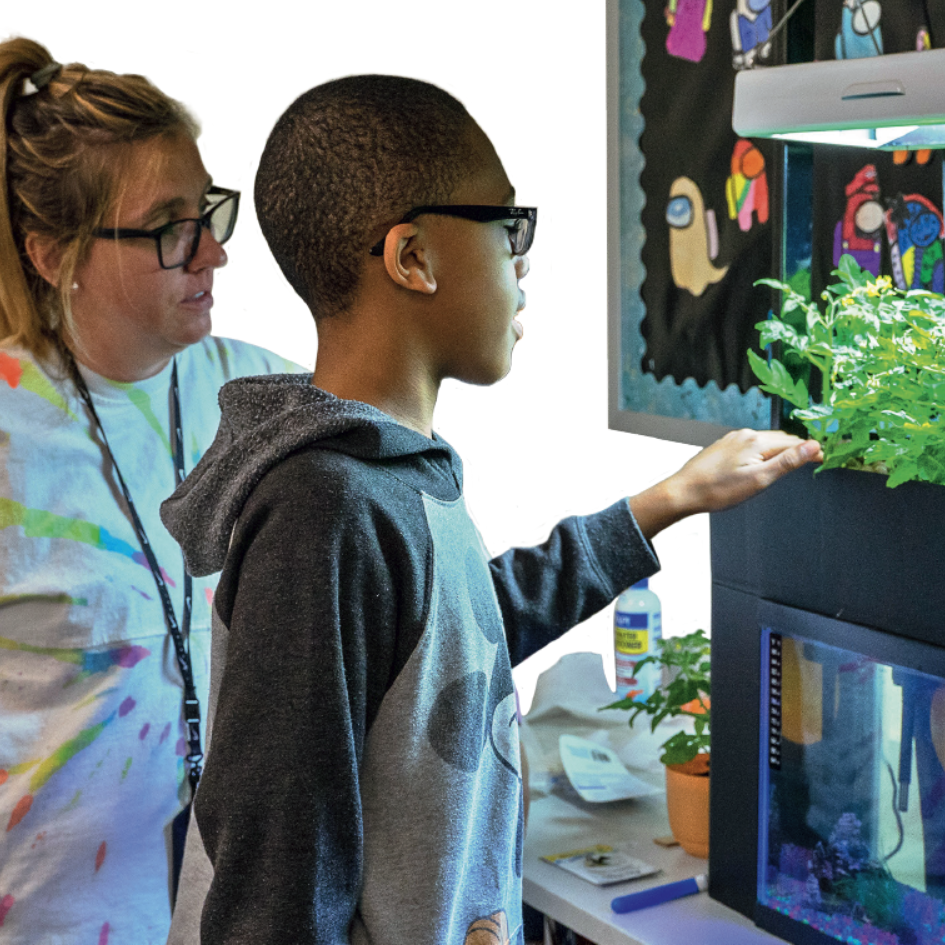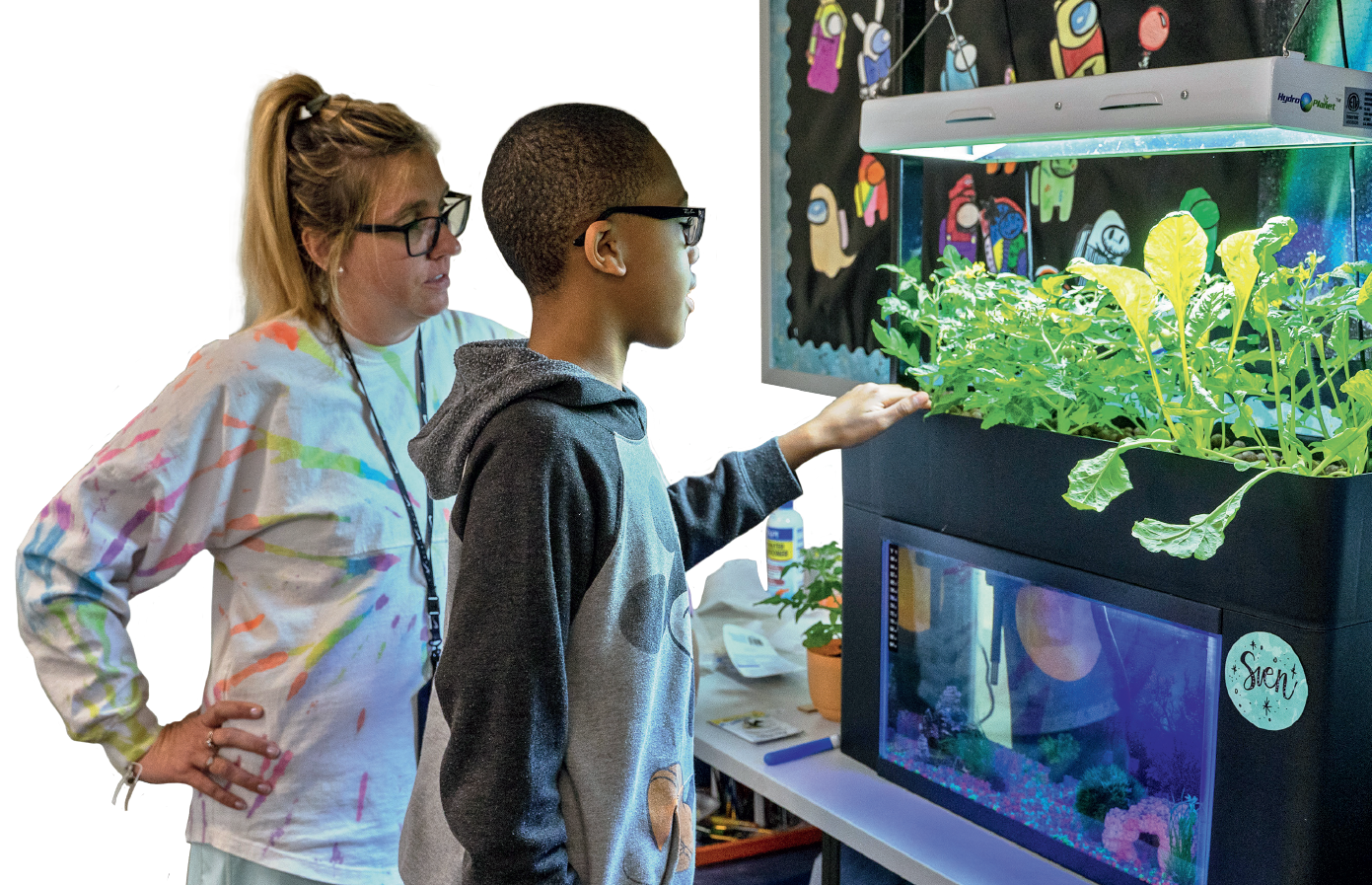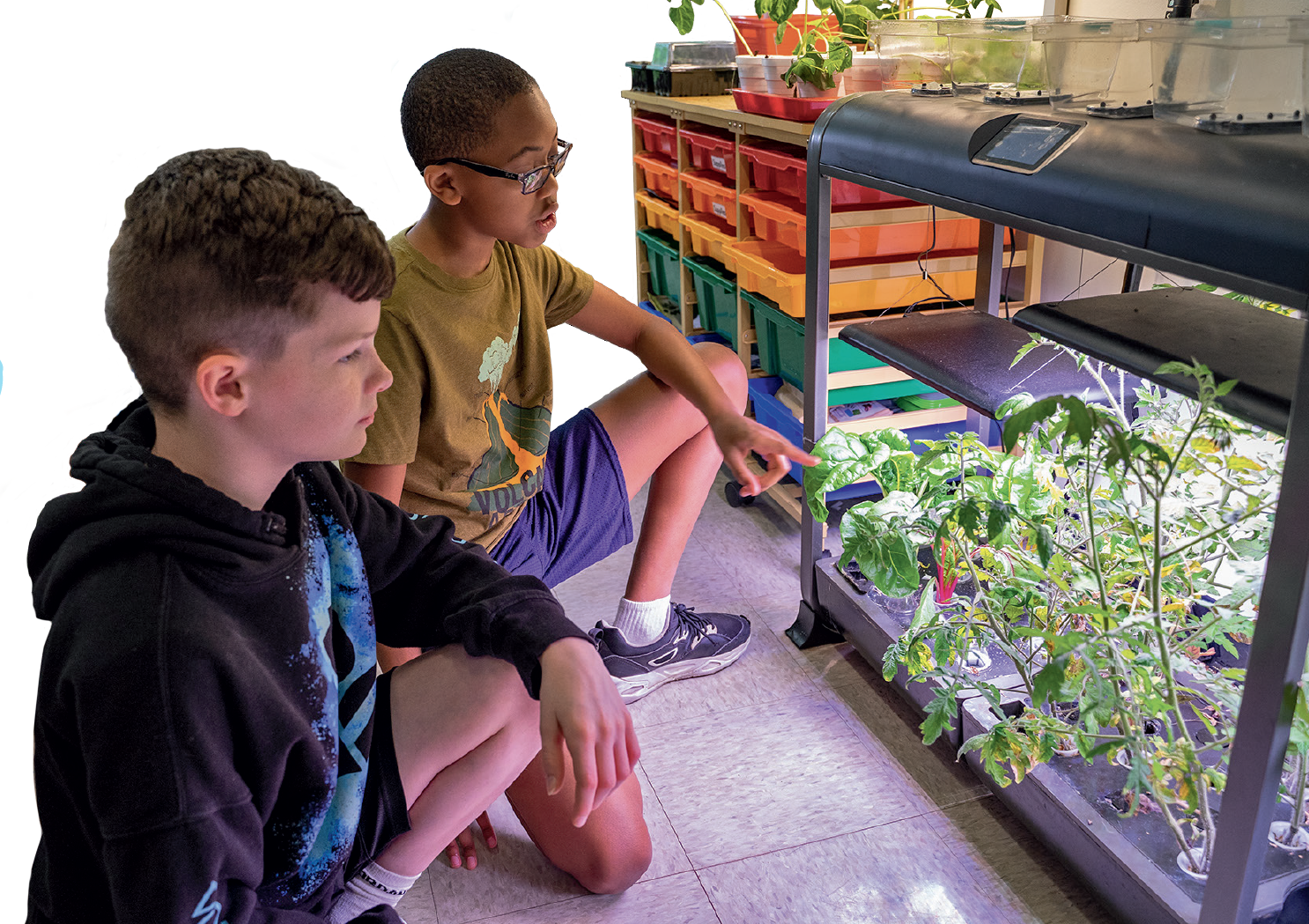
5 minute read
A Haven for Growth: Inside McCall Emerick’s Thriving Ecosystem
A Haven for Growth: Inside McCall Emerick's Thriving Ecosystem
By Amanda Ritchie
An array of lush green plants surrounds the perimeter of McCall Emerick’s sixth-grade science classroom in Allegheny Valley School District’s Acmetonia Elementary. Throughout the room, plants grow under various conditions. Some crowd the windowsill, receiving natural sunlight, while others are lined up in trays or bunched under plastic domes where they bask in the glow of grow lights. Learning in this environment helps ecological concepts like the plant life cycle take root in her students’ minds.
Emerick began her horticultural classroom adventure in the 2020-21 school year when she planted lettuce and cherry tomatoes, purchased through a Farm to Table grant focused on promoting healthy eating habits in schools. This year, as part of the AIU’s transformED Teacher Innovation Fellowship, she introduced her students to the concept of symbiotic relationships through aquaponic farming.

“The tank provides the water for the fish, and the fish provide the nutrients for the plants that grow at the top of the tank,” Emerick explained. Students watch the role each element plays in sustaining the other — a living lesson in the interconnectedness of ecosystems.
Starting in April, Emerick’s science classes collectively planted a variety of seeds in different growing environments, including soil, LED greenhouses, seed heating mats, a hydroponic planter and an aquaponic planter. The classroom soon erupted into a vibrant tapestry of plant life, affectionately referred to as the “jungle” by the students themselves.
Her students share responsibilities to care for the plants and fish tank, including pollination with an electric toothbrush. Each task is a chance for collaboration and learning.
“The classroom is almost like a whole ecosystem because everyone has jobs that they do,” said student Natahlia Schreckengost. “We also make sure that the fish are fed and the plants are watered.”

Classmate Adele Walters-Vrabel explained the intricacies of their thriving classroom ecosystem. “Right now, we’re growing plants, as you can see. Plants are producers in the food chain. They get their energy from the sun. These grow lights are the sun in this kind of an ecosystem,” she said. Emerick smiled with a nod and chimed in, “We studied the food chain, so that was a good tie-in.”

The well-being of the students has also found nourishment amidst the lush surroundings. The living ecosystem has created a sense of comfort and serenity that permeates the learning environment. “The fish tank has provided a therapeutic component for students,” Emerick said. “The fish are very good for social-emotional learning… Students love coming in and seeing the fish. They love coming in and seeing the plants grow.”
Emerick’s commitment to innovative instruction created a haven that underscores the concept of a flexible learning environment, where the physical space is a conduit for learning and exploration. She brings the outdoors inside while fostering a culture of curiosity and cooperation. Her efforts are appreciated among her students.
”I’m just glad I’m in this class because it’s just a great environment here,” said Maddox Huss. “You can just look at the plants if you’re ever sad. They’re a comfort to go to. So this class is more special than the other ones.” Another student voice called out, “This is the best school environment you could be in!”

Emerick continues the healthy eating aspect of the project and even acquired an air fryer for the classroom through yet another grant. On this day, Bentley Hardaway used store-bought produce to demonstrate how they had recently air-fried green beans grown in their classroom.

Thanks to their connection with the plants, previously picky eaters have been more willing to try certain foods for the first time. In fact, Adele tried her first mushroom after growing them as part of the unit on decomposers. Students already took home basil plants and they will take the rest of the plants with them at the end of the school year to keep up the healthy habit.


Read more from this issue: Fall 2023










